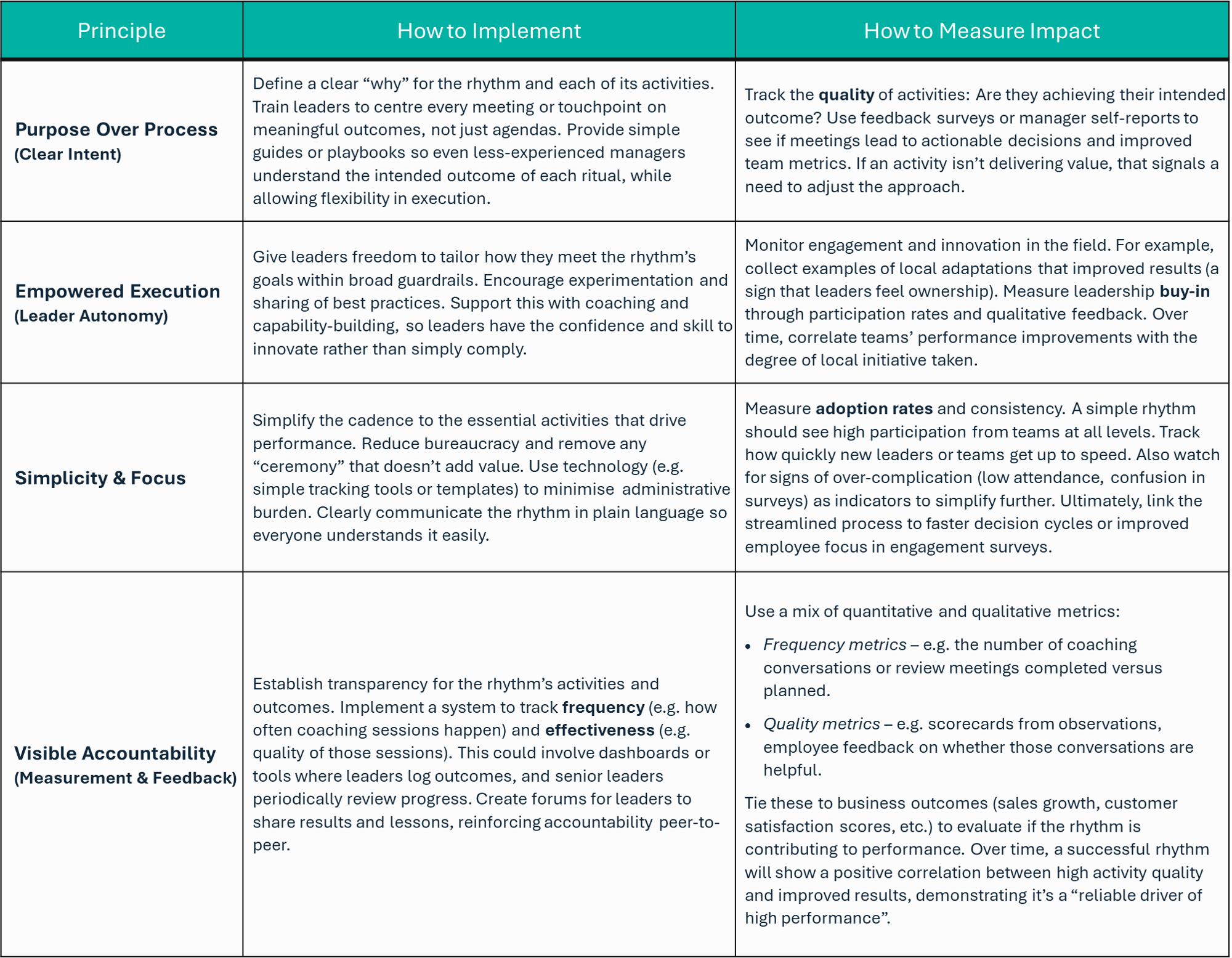From routine to results: designing a high performance operating rhythm
Large organisations often establish a regular “operating rhythm” of meetings, check-ins, and reviews to keep teams aligned. Yet without thoughtful design, these routines can degrade into robotic, tick-the-box exercises that add busyness without boosting performance.
By contrast, high-performing teams use a deliberate cadence of activities aimed at continuous improvement – their success is rarely accidental, but the result of disciplined rhythms focused on behaviours that drive meaningful outcomes. In other words, the right operating rhythm can be a powerful engine for performance and culture, not just a calendar of meetings.
How can an organisation design and embed a new operating rhythm that truly drives high performance?
It starts with clear principles and a holistic approach. The most effective rhythms are built on clear purpose, simplicity, empowered leadership, and accountability. Every activity in the cadence should serve a well-defined intent (the “why”), rather than just a procedure, ensuring the focus stays on outcomes that matter. The framework must be kept as simple and streamlined as possible, so that leaders focus on coaching and results – not cumbersome process – making it easy for teams to adopt the rhythm at scale. At the same time, leaders need autonomy to adapt how they execute the rhythm within their context; giving teams ownership in how they meet the intent of each activity drives deeper engagement and sustained effort. Finally, visibility and accountability mechanisms are crucial: by tracking both the frequency and quality of leadership activities, the organisation can ensure the new rhythm is alive and delivering on its purpose, rather than fading into checkbox compliance.
Implementing such a performance rhythm is not just an operational change – it’s a leadership and culture initiative. It requires equipping leaders with new skills and mindsets so they can champion the rhythm. In practice, this means investing in leadership development and coaching to build capabilities like effective feedback, coaching for performance, and data-driven decision making. It also means applying change management techniques: communicating the “why” behind the new rhythm, capturing hearts and minds, and creating early wins that build confidence in the new way of working. A partner like YakTrak + GRIST plays a pivotal role in this process – for example, by facilitating interactive workshops to challenge mindsets, working side-by-side with managers as they practice new routines, and holding leaders accountable for applying the rhythm to achieve real performance outcomes. Done right, a well-designed operating rhythm becomes the backbone of a high-performance culture: it keeps teams focused on what matters, fosters consistent coaching and feedback, and ultimately drives measurable improvements in key business metrics like customer satisfaction, growth, and productivity.
To illustrate these ideas, the table below outlines key principles of a high-performance operating rhythm, along with practical implementation strategies and how to measure success for each:
In summary, designing and embedding a new operating rhythm is a multifaceted effort – part process design, part leadership development, and part cultural change. It thrives on a clear sense of purpose, simplicity of execution, empowerment of people, and diligent measurement. When these elements come together, an operating rhythm becomes far more than a schedule of meetings: it becomes a strategic asset. It creates an environment where leaders coach their teams towards continual improvement, everyone understands how day-to-day actions connect to strategic goals, and progress is tangible and tracked. This kind of rhythm ultimately drives real results – from more engaged employees to better customer outcomes – and sustains them by ingraining high-performance habits into the fabric of the organisation.
By following these principles (and with experienced guidance in facilitation and change management), any large organisation can find its beat and make its new operating rhythm a lasting engine for performance. It’s about turning routine into results and ensuring that the way “we do things around here” consistently brings out the best in people and the business.



